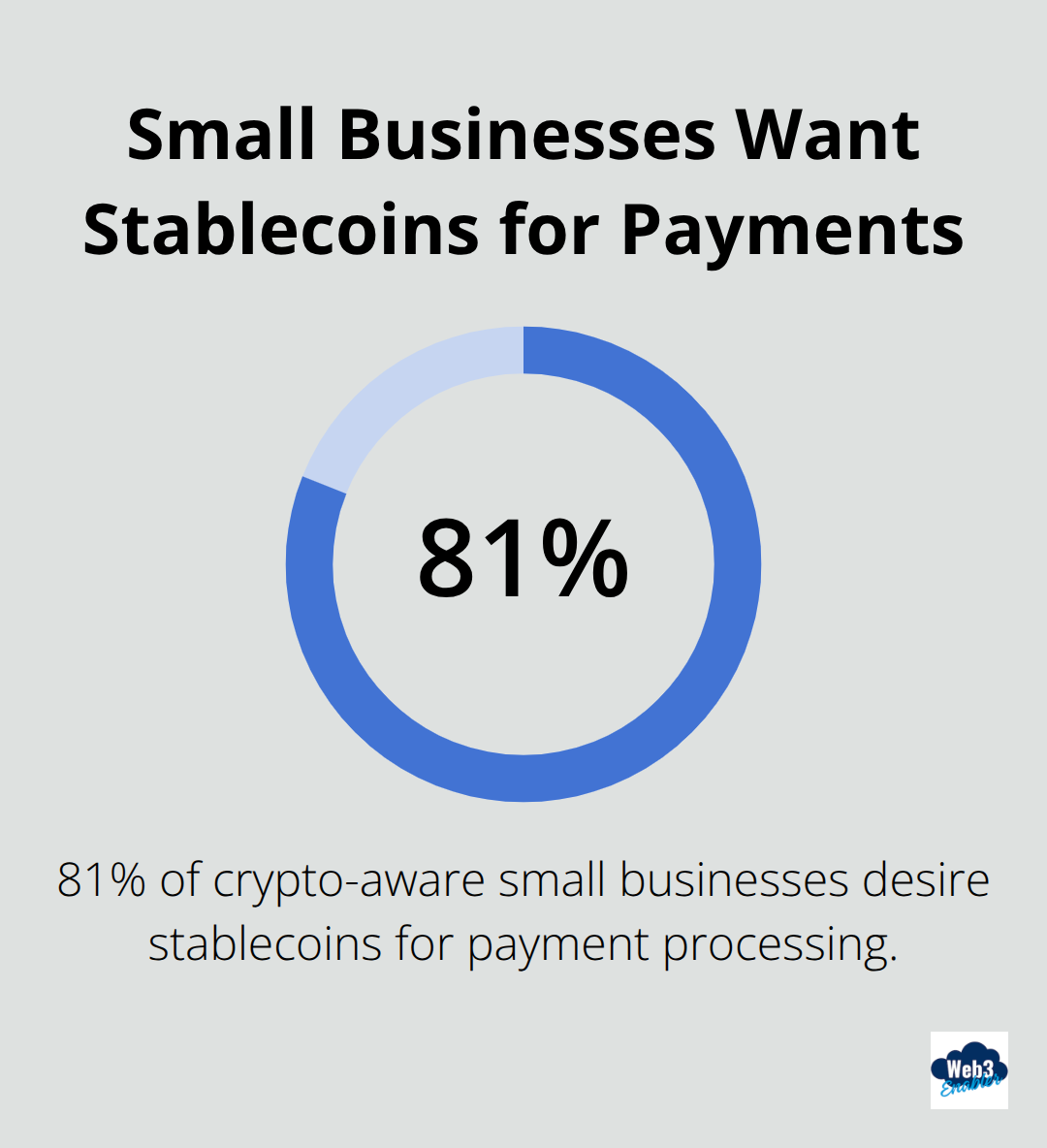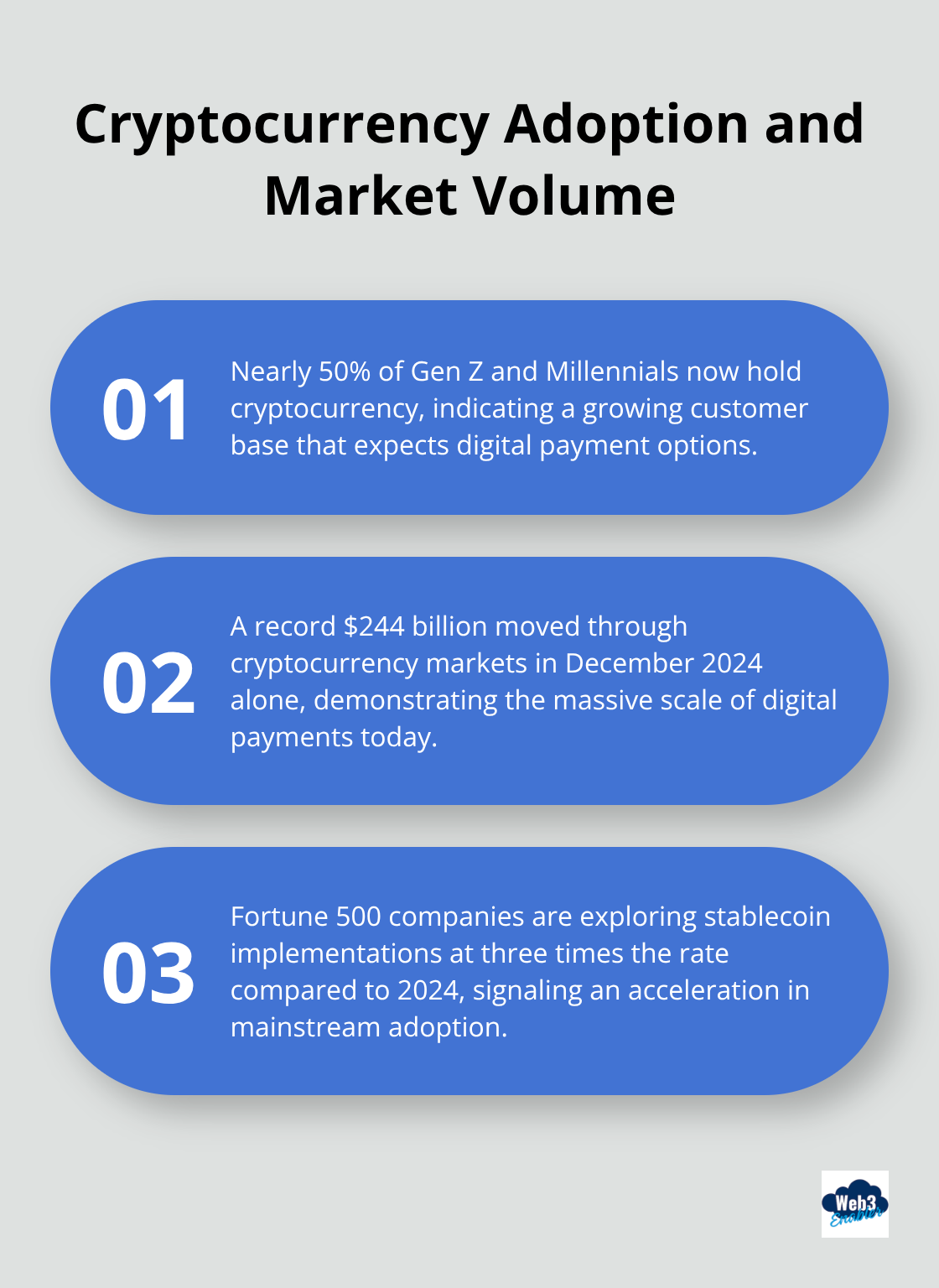
Crypto subscription payments are transforming how businesses handle recurring revenue. Instead of wrestling with traditional payment processors and their endless fees, companies can now collect payments directly in digital currencies.
We at Web3 Enabler see businesses cutting payment processing costs by up to 70% while reaching global customers instantly. The setup might seem intimidating, but it’s surprisingly straightforward once you know the right steps.
How Do Crypto Subscriptions Actually Work
Crypto subscription payments execute through automated blockchain transactions that charge customers at set intervals without traditional banks. Picture Netflix, but instead of your credit card processing a monthly charge, your crypto wallet automatically sends USDC or another digital currency to the business. Smart contracts handle the heavy lifting – they execute payments on predetermined schedules whether weekly, monthly, or annually.
Traditional Payment Processors Cost You More
Traditional subscription systems hit businesses with transaction fees of 3-7% per payment, plus chargebacks, failed payments, and international processing headaches. Stablecoin subscriptions slash these costs to under 1% while funds settle instantly in your business account.
Coinbase data reveals 81% of crypto-aware small businesses want stablecoins for payments because they eliminate wait times and currency conversion nightmares of cross-border transactions. Your European customers pay the same low fees as local ones, and you receive funds in minutes instead of days while traditional banking systems hold your money for 3-5 business days.

USDC Rules Business Subscriptions
USDC leads business subscriptions because it’s designed to hold a steady value while offering blockchain speed and transparency. USDT works for high-volume operations that need maximum liquidity, while DAI appeals to businesses that want decentralized stability. PayPal’s PYUSD gains traction among traditional businesses already on PayPal infrastructure.
The secret lies in choosing stablecoins your customers already hold. USDC covers 90% of business use cases with its regulatory compliance and institutional backing from Circle (making it the safe choice for most companies).
Setup Requires the Right Infrastructure Partner
Most businesses need a payment gateway that handles the technical complexity while you focus on your customers. The infrastructure partner manages wallet creation, invoice generation, and payment tracking across multiple blockchains. This approach beats building everything from scratch – you avoid months of development time and security headaches.
Now that you understand how crypto subscriptions work, let’s explore which payment infrastructure will best serve your specific business needs.
API Calls Replace Manual Work
Most gateways require only one API call to create invoices and generate payment addresses. This automation eliminates the tedious manual processes that eat up your team’s time. The system tracks payments across multiple blockchains while you focus on what matters most – your customers.
Your payment infrastructure choice determines how smoothly your crypto subscriptions will run, but even the best gateway won’t help if your automated transactions fail to execute properly. Web3 Enabler brings blockchain solutions to corporate environments with low-cost crypto payment services.
How Do You Stay Compliant While Running Crypto Subscriptions
Regulatory compliance starts with proper customer identification and transaction monitoring systems that track every payment automatically. The EU requires businesses with crypto transactions to implement Anti-Money Laundering procedures, while US companies must report payments over $10,000 to FinCEN.
Customer Support Prevents Payment Disasters
Failed crypto payments happen differently than credit card failures, so your support team needs specific training on blockchain transaction statuses and wallet connection issues. Create automated email sequences that explain payment processes before customers encounter problems.
Most crypto payment issues stem from user confusion rather than technical failures (not blockchain glitches). Set up real-time notifications through webhooks that alert customers immediately when payments succeed or fail, then follow up with clear next steps.
Overpayments and underpayments require defined policies that your team can execute consistently without escalation to management every time.
Price Volatility Protection Saves Your Revenue
Stablecoins eliminate most volatility concerns, but even USDC can fluctuate slightly during market stress periods. Set payment windows of 24-48 hours maximum to reduce exposure, and consider automatic fiat conversions for businesses that can’t handle any price movement.
TransFi’s smart routing automatically selects the most stable payment path, while some gateways offer volatility protection services that guarantee specific exchange rates for subscription payments. Monitor your settlement currency daily and adjust prices if your chosen stablecoin shows persistent deviation from its peg.
Documentation Requirements Matter More Than You Think
Regulators scrutinize crypto businesses harder than traditional payment processors. Keep detailed logs of every transaction, customer interaction, and system change. Your payment gateway should provide comprehensive reporting tools that export transaction data in formats auditors accept.
Store customer verification documents securely and maintain backup systems for all compliance records. Most jurisdictions require you to retain these records for 5-7 years minimum.
Final Thoughts
Crypto subscription payments need three steps: choose a compliant payment gateway like NOWPayments or Coinbase Commerce, implement automated systems with proper customer notifications, and establish clear compliance procedures that satisfy regulatory requirements. Technical complexity drops when you partner with established infrastructure providers rather than build everything internally. The subscription economy expands as businesses recognize the cost advantages of stablecoins over traditional payment processors.
Nearly 50% of Gen Z and Millennials now hold cryptocurrency, which creates a customer base that expects digital payment options. Fortune 500 companies explore stablecoin implementations at three times the rate compared to 2024, and this signals mainstream adoption acceleration. A record $244 billion moved through cryptocurrency markets in December 2024 alone (showing the massive scale of digital payments today).

Your next step involves choosing between custom solutions or existing platforms. Web3 Enabler provides Salesforce-native blockchain solutions that integrate crypto subscription payments directly into existing corporate infrastructure without disrupting current business processes. Start with a pilot program that uses stablecoins for a small customer segment, then scale based on results and customer feedback.







